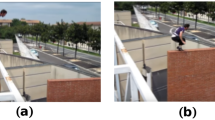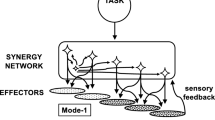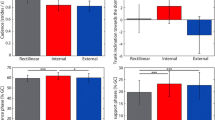
Overview
- Promotes interdisciplinary research on anthropomorphic systems at large and on humanoid robotics in particular
- Presents recent research from roboticists and researchers in biomechanics
- Written by experts in the field
Part of the book series: Springer Tracts in Advanced Robotics (STAR, volume 124)
Access this book
Tax calculation will be finalised at checkout
Other ways to access
About this book
Mechanical laws of motion were applied very early for better understanding anthropomorphic action as suggested in advance by Newton «For from hence are easily deduced the forces of machines, which are compounded of wheels, pullies, levers, cords, and weights, ascending directly or obliquely, and other mechanical powers; as also the force of the tendons to move the bones of animals». In the 19th century E.J. Marey and E. Muybridge introduced chronophotography to scientifically investigate animal and human movements. They opened the field of motion analysis by being the first scientists to correlate ground reaction forces with kinetics.
Despite of the apparent simplicity of a given skilled movement, the organization of the underlying neuro-musculo-skeletal system remains unknown. A reason is the redundancy of the motor system: a given action can be realized by different muscle and joint activity patterns, and the same underlying activity may give rise to several movements. After the pioneering work of N. Bernstein in the 60’s on the existence of motor synergies, numerous researchers «walking on the border» of their disciplines tend to discover laws and principles underlying the human motions and how the brain reduces the redundancy of the system. These synergies represent the fundamental building blocks composing complex movements.
In robotics, researchers face the same redundancy and complexity challenges as the researchers in life sciences. This book gathers works of roboticists and researchers in biomechanics in order to promote an interdisciplinary research on anthropomorphic systems at large and on humanoid robotics in particular.
Similar content being viewed by others
Keywords
Table of contents (13 chapters)
-
Front Matter
Editors and Affiliations
Bibliographic Information
Book Title: Biomechanics of Anthropomorphic Systems
Editors: Gentiane Venture, Jean-Paul Laumond, Bruno Watier
Series Title: Springer Tracts in Advanced Robotics
DOI: https://doi.org/10.1007/978-3-319-93870-7
Publisher: Springer Cham
eBook Packages: Intelligent Technologies and Robotics, Intelligent Technologies and Robotics (R0)
Copyright Information: Springer International Publishing AG, part of Springer Nature 2019
Hardcover ISBN: 978-3-319-93869-1Published: 09 August 2018
Softcover ISBN: 978-3-030-06735-9Published: 19 January 2019
eBook ISBN: 978-3-319-93870-7Published: 01 August 2018
Series ISSN: 1610-7438
Series E-ISSN: 1610-742X
Edition Number: 1
Number of Pages: VIII, 310
Number of Illustrations: 33 b/w illustrations, 67 illustrations in colour
Topics: Robotics and Automation, Biomedical Engineering and Bioengineering, Artificial Intelligence, Computer Appl. in Life Sciences



